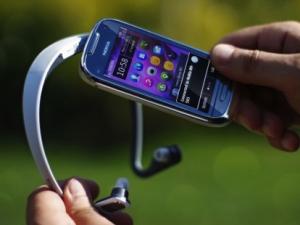Nokia Releases Long-Awaited Symbian Update to Enable C7 NFC Features

Nokia has finally released its update to the Symbian operating system, which will turn on the NFC functionality in its C7 smartphone that started shipping 10 months ago.
Nokia today announced the release of the Symbian update, dubbed Anna, for over-the-air downloads to C7s already sold. The updates will be available this week in several countries including the United Kingdom, Germany, Poland and India, with more to follow over the next three weeks, said Nokia today in its blog.
Although a long time in coming, the update potentially puts millions more NFC smartphones into the pockets of consumers, with some estimates placing C7 shipment figures at more than 5 million worldwide.
The update activates the NFC chip that has been in the C7 since the smartphone began shipping last October. Nokia had originally announced the forthcoming Symbian update in April, and it was expected to be available earlier.
Nokia has already begun shipping new C7s with the Symbian update onboard, though those shipments only started in recent weeks. Nokia shipped an NFC version of the phone, called the Astound, in the United States through T-Mobile USA earlier in the year.
The update improves the user interface and other features for the C7 and for other non-NFC Nokia phones, the N8, E7 and C6-01.
Nokia is battling to convince consumers that it has not abandoned the Symbian platform and in today’s announcement the Finnish handset maker said that it would introduce up to 10 new Symbian handsets over the next 12 months and reiterated that it will support the platform until 2016.
Many of the Symbian phones to be introduced in the next year are expected to support NFC, including at least some with support for secure elements. This would enable them to do secure payment and ticketing in card-emulation mode. The C7 and forthcoming Nokia N9, which runs the MeeGo platform, do not have embedded secure chips or support for SIM cards as secure elements, though the latter might be technically possible.
But the handset maker’s focus is clearly on its forthcoming phones supporting Microsoft’s Windows Phone platform. Nokia and Microsoft plan to introduce NFC-enabled Windows phones, but not until next year, as NFC Times has reported. The first Nokia Windows phone will probably be out by the end of the year, but without NFC.
Nokia has been promoting features that do not require secure elements, using instead the phone to read NFC tags and communicate in peer-to-peer mode, with such applications as sharing contacts, photos, videos, and pairing the phone with accessories, said Nokia.
Nokia has been touting these so-called “open NFC” applications, which include a promotional tie-in with Rovio, maker of the popular video game, Angry Birds. The project enables users to tap their NFC phones on those of their friends or on tags in objects to unlock additional levels of the game.
Nokia this summer also launched its own online store, called the NFC Hub, to promote use of tags. The site sells tags, stickers and smart posters, and Nokia and its partners also will help small businesses and other organizations build and manage campaigns around the tags. The first such project launched late last week at two relatively small museums in London, enabling users to tap tags to get more information about exhibits and to buy tickets to future museum events.
The Symbian update and prospect for future NFC-enabled Symbian phones is welcome news for NFC developers who specialize in the Symbian platform. One is Finland-based Aditux, formerly called Red Solution Finland, which recently released an NFC app, Xchange for Nokia’s Ovi app store. It enables users to share business cards, photos and other data by touching their devices together. The contact details get exchanged by email and also are added to the contact lists of the devices.
Aditux CEO Jayden Khakurel told NFC Times the company delayed the release of the app to the Ovi store while waiting for the Anna update. App developers, in general, also have been focusing on business users rather than the mass market because of the scarcity of phones, he said.
“To drive NFC in the mass market, there is a huge need for NFC handsets,” he said. “The Symbian Anna update on Nokia C7 adds one more NFC handset in the market, even though it (the phone) has been in the market for a while.”
He added that the Anna release reassures Symbian developers that “there will be more Nokia handsets with NFC using Symbian.” That encourages them to keep developing NFC apps for the platform.












